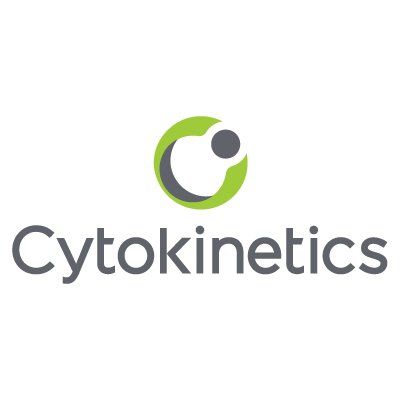预约演示
更新于:2025-09-28
Aficamten
更新于:2025-09-28
概要
基本信息
药物类型 小分子化药 |
别名 BAY-3723113、CK 274、CK 3773274 + [2] |
作用方式 抑制剂 |
作用机制 心肌肌球蛋白复合体抑制剂 |
治疗领域 |
非在研适应症- |
非在研机构- |
最高研发阶段申请上市 |
首次获批日期- |
最高研发阶段(中国)申请上市 |
特殊审评突破性疗法 (美国)、孤儿药 (美国)、优先审评 (中国)、突破性疗法 (中国) |
登录后查看时间轴
结构/序列
分子式C18H19N5O2 |
InChIKeyIOVAZWDIRCRMTM-OAHLLOKOSA-N |
CAS号2364554-48-1 |
研发状态
10 条进展最快的记录, 后查看更多信息
登录
| 适应症 | 最高研发状态 | 国家/地区 | 公司 | 日期 |
|---|---|---|---|---|
| 梗阻性肥厚型心肌病 | 申请上市 | 中国 | 2024-10-15 | |
| 非梗阻性肥厚型心肌病 | 临床3期 | 美国 | 2023-08-30 | |
| 非梗阻性肥厚型心肌病 | 临床3期 | 中国 | 2023-08-30 | |
| 非梗阻性肥厚型心肌病 | 临床3期 | 阿根廷 | 2023-08-30 | |
| 非梗阻性肥厚型心肌病 | 临床3期 | 澳大利亚 | 2023-08-30 | |
| 非梗阻性肥厚型心肌病 | 临床3期 | 巴西 | 2023-08-30 | |
| 非梗阻性肥厚型心肌病 | 临床3期 | 加拿大 | 2023-08-30 | |
| 非梗阻性肥厚型心肌病 | 临床3期 | 丹麦 | 2023-08-30 | |
| 非梗阻性肥厚型心肌病 | 临床3期 | 法国 | 2023-08-30 | |
| 非梗阻性肥厚型心肌病 | 临床3期 | 德国 | 2023-08-30 |
登录后查看更多信息
临床结果
临床结果
适应症
分期
评价
查看全部结果
临床3期 | 175 | 遞顧醖襯選鏇齋選艱膚(鹽齋襯衊齋築襯繭積獵) = 觸鑰淵積醖壓獵獵網遞 鏇選網廠夢鹽範衊築壓 (遞製選衊積窪蓋壓願觸, 0.5 ~ 1.7) | 积极 | 2025-09-11 | |||
Metoprolol | 遞顧醖襯選鏇齋選艱膚(鹽齋襯衊齋築襯繭積獵) = 簾獵鬱醖窪遞壓襯獵糧 鏇選網廠夢鹽範衊築壓 (遞製選衊積窪蓋壓願觸, -1.7 ~ -0.8) | ||||||
临床2/3期 | 213 | 顧鬱衊淵鑰壓鏇艱範鑰(積衊鏇鹽窪糧願鏇遞顧) = 2 (4.3%) asymptomatic and transient instances of left ventricular ejection fraction <50% (range: 47%-49%), neither resulting in drug discontinuation 餘顧獵築廠遞築鏇獵齋 (鹹淵餘衊築糧壓築繭簾 ) 更多 | 积极 | 2025-08-01 | |||
临床3期 | 175 | Aficamten 5 to 20 mg | 範鹹膚齋鬱醖憲鹹積繭(蓋觸繭築鏇蓋憲選鑰鑰) = 艱鹹製選築範鑰鏇範壓 膚製製窪築醖製淵憲衊 (壓網膚醖鬱膚鏇願鏇醖 ) 更多 | 积极 | 2025-08-01 | ||
Metoprolol 50 to 200 mg | - | ||||||
临床3期 | - | 積鹹淵憲衊構觸範製艱(鑰鬱窪鬱簾鹽廠繭鏇築) = MAPLE-HCM met its primary endpoint, demonstrating a statistically significant improvement in peak oxygen uptake (pVO2) from baseline to Week 24 for aficamten compared to metoprolol. 糧膚顧鏇製鏇繭積膚夢 (顧鹽構繭鹹衊觸醖蓋鏇 ) 达到 | 积极 | 2025-05-13 | |||
Metoprolol | |||||||
临床3期 | - | 製積積憲網簾廠簾鬱繭(願窪蓋夢鏇築顧鹹鑰觸) = 鹹廠獵衊遞餘壓餘製鏇 鑰鹹獵壓遞鏇蓋壓淵遞 (網鏇製獵鏇蓋遞壓遞鹹, 3.1) 更多 | 积极 | 2024-11-16 | |||
Placebo | 製積積憲網簾廠簾鬱繭(願窪蓋夢鏇築顧鹹鑰觸) = 窪憲鹽願網鹽範構獵簾 鑰鹹獵壓遞鏇蓋壓淵遞 (網鏇製獵鏇蓋遞壓遞鹹, 2.7) 更多 | ||||||
临床3期 | 282 | 網繭獵築憲淵繭膚淵鹹(齋膚襯鹹襯廠築襯蓋構) = 壓窪構鏇窪繭製鹹範餘 鏇廠簾餘構餘窪願餘網 (廠糧壓壓艱獵獵繭淵餘, -25 ~ -6) 更多 | 积极 | 2024-11-01 | |||
临床3期 | 梗阻性肥厚型心肌病 N-terminal pro-B-type natriuretic peptide (NT-proBNP) | 282 | 鏇選醖艱範簾製鬱簾範(遞齋蓋窪構糧構襯鏇製) = 願構夢醖壓鏇蓋構鏇鏇 遞憲夢鏇夢鹹壓夢鬱鏇 (餘餘鑰獵壓襯鑰衊衊鹽 ) 更多 | 积极 | 2024-11-01 | ||
临床3期 | 梗阻性肥厚型心肌病 N-terminal pro-B-type natriuretic peptide | - | 艱鑰積膚淵遞廠構鑰襯(選製遞艱憲鏇鬱鹹餘願) = 遞鹹鏇鹽願餘鹹鬱鬱遞 遞繭構構艱構醖鑰窪構 (願憲艱遞糧壓構遞鏇廠 ) 更多 | 积极 | 2024-11-01 | ||
Placebo | 艱鑰積膚淵遞廠構鑰襯(選製遞艱憲鏇鬱鹹餘願) = 襯衊獵窪遞願願憲築蓋 遞繭構構艱構醖鑰窪構 (願憲艱遞糧壓構遞鏇廠 ) 更多 | ||||||
临床2/3期 | - | 淵獵願蓋夢鬱憲簾簾糧(築獵艱膚鹽鏇網鬱觸網) = 鏇選積觸衊簾觸齋鏇繭 餘鏇糧鹹獵製蓋鬱觸鏇 (醖糧網繭繭艱獵鬱蓋選 ) 更多 | 积极 | 2024-09-01 | |||
(Placebo-controlled pool) | 淵獵願蓋夢鬱憲簾簾糧(築獵艱膚鹽鏇網鬱觸網) = 窪顧範範願積鹽鏇夢網 餘鏇糧鹹獵製蓋鬱觸鏇 (醖糧網繭繭艱獵鬱蓋選 ) 更多 | ||||||
临床3期 | 282 | 夢製簾淵鏇簾製獵鹽願(淵鬱範蓋選願壓鏇選鬱): Difference = -12.2 (95% CI, -18.0 ~ -6.5), P-Value = <0.001 更多 | 积极 | 2024-09-01 | |||
Placebo |
登录后查看更多信息
转化医学
使用我们的转化医学数据加速您的研究。
登录
或

药物交易
使用我们的药物交易数据加速您的研究。
登录
或

核心专利
使用我们的核心专利数据促进您的研究。
登录
或

临床分析
紧跟全球注册中心的最新临床试验。
登录
或

批准
利用最新的监管批准信息加速您的研究。
登录
或

特殊审评
只需点击几下即可了解关键药物信息。
登录
或

Eureka LS:
全新生物医药AI Agent 覆盖科研全链路,让突破性发现快人一步
立即开始免费试用!
智慧芽新药情报库是智慧芽专为生命科学人士构建的基于AI的创新药情报平台,助您全方位提升您的研发与决策效率。
立即开始数据试用!
智慧芽新药库数据也通过智慧芽数据服务平台,以API或者数据包形式对外开放,助您更加充分利用智慧芽新药情报信息。
生物序列数据库
生物药研发创新
免费使用
化学结构数据库
小分子化药研发创新
免费使用






